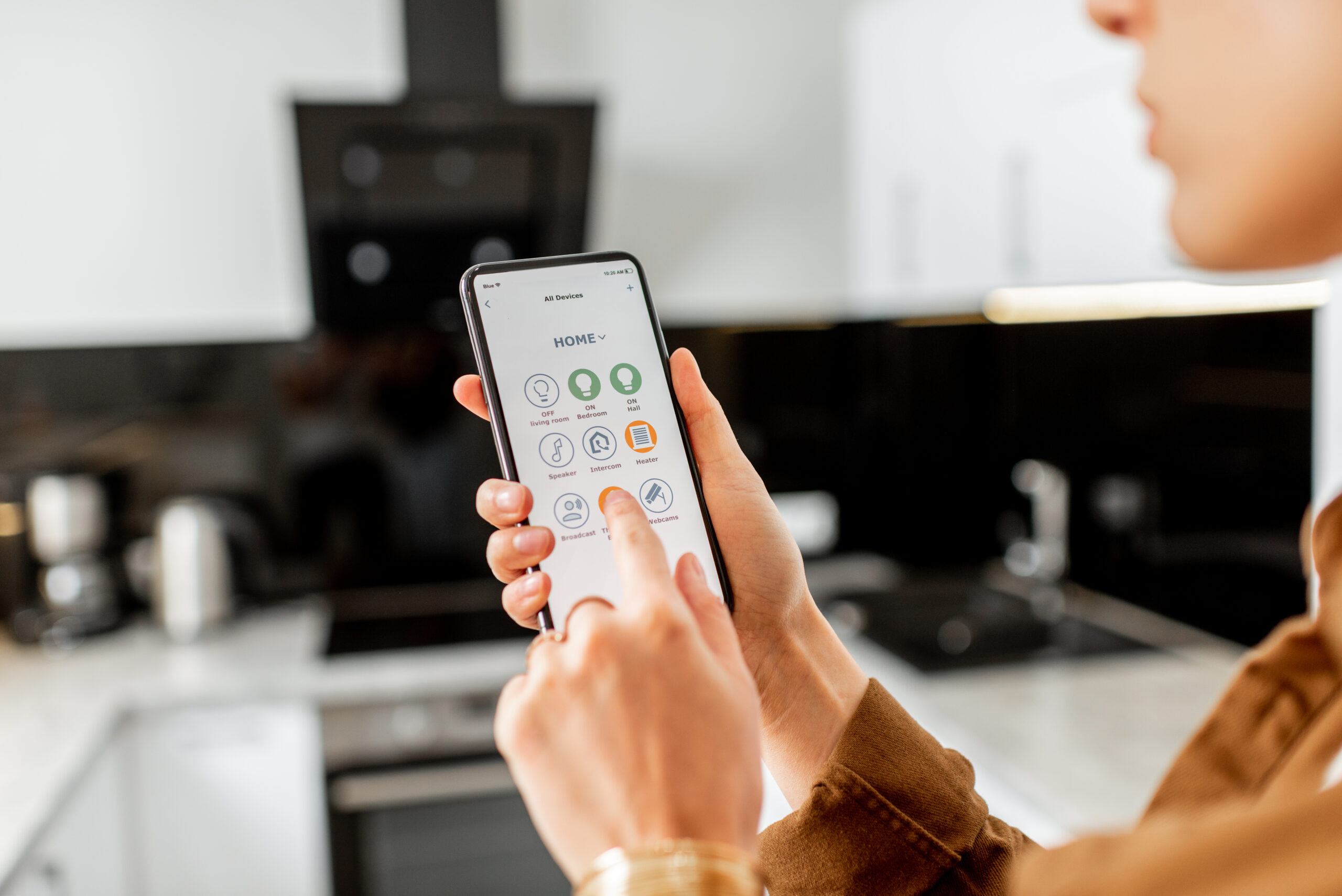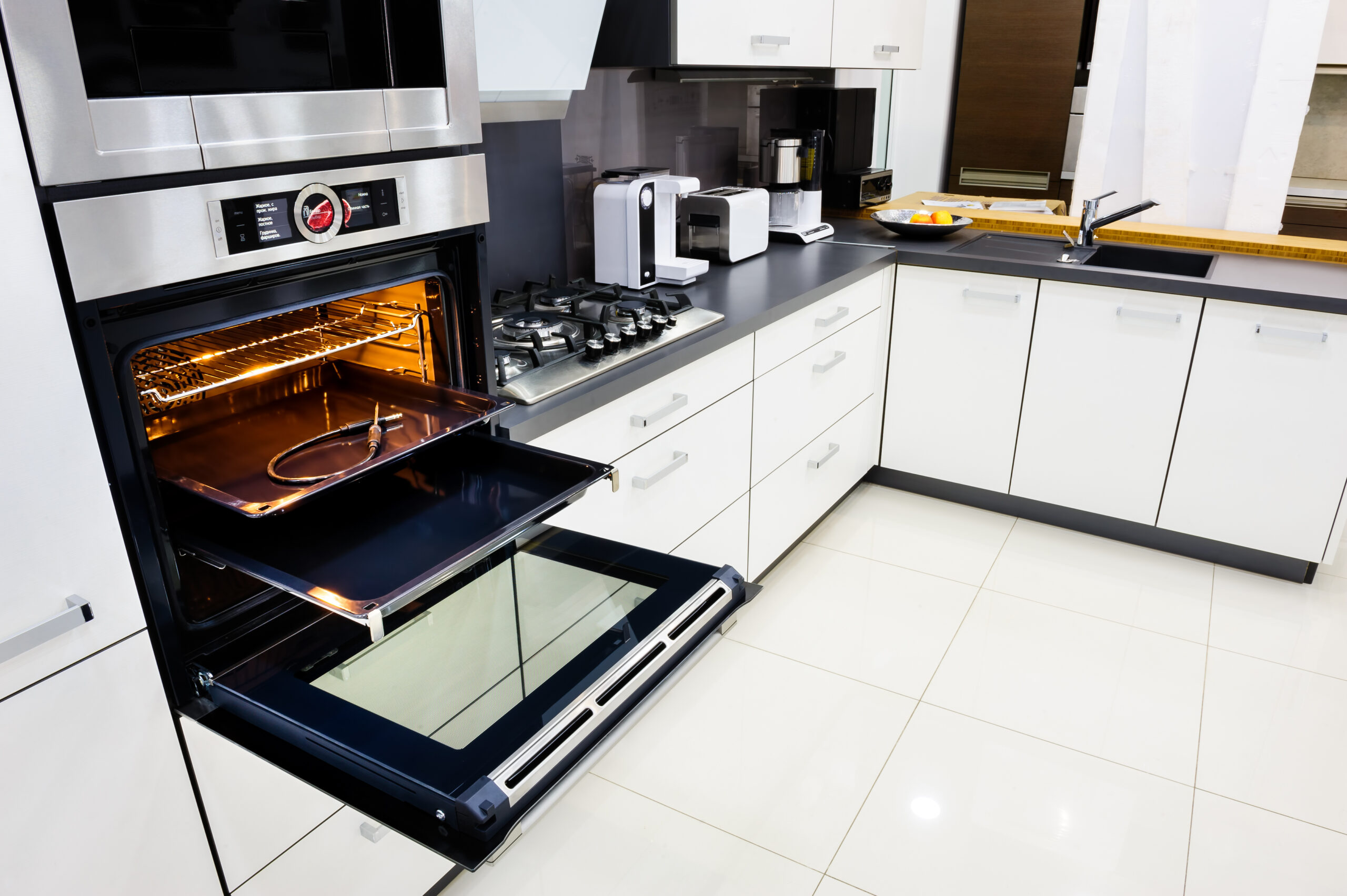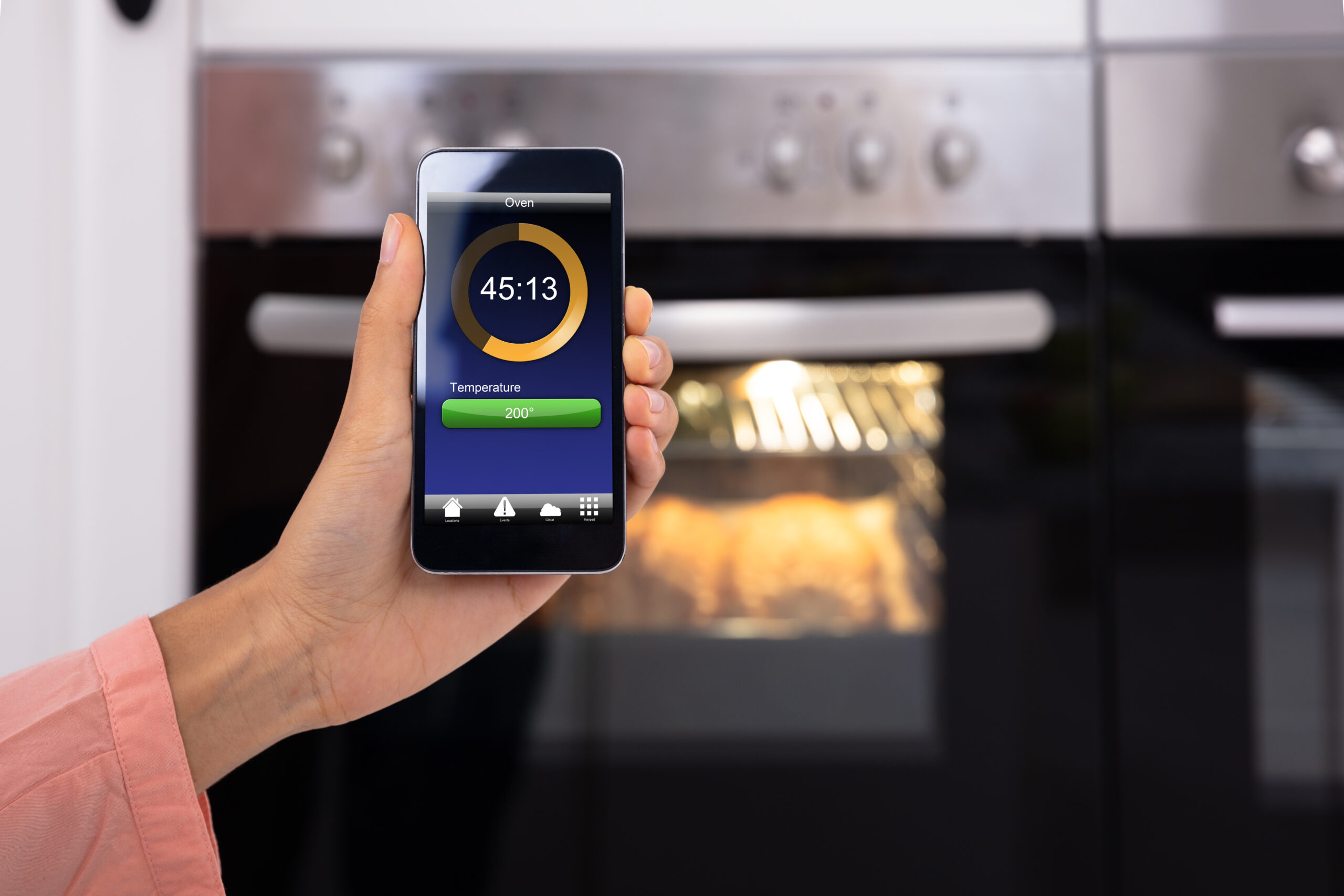Discover the sustainable future of cooking with smart kitchens. These innovative kitchen spaces are quickly gaining traction in the food service industry due to their numerous benefits, including increased productivity, waste reduction, and a more sustainable operation.
By utilizing smart kitchen technology, businesses can experience cost savings through efficient inventory management, energy conservation, and demand forecasting.
In addition to the financial advantages, smart kitchens also attract and retain customers by promoting environmental responsibility.
With the ability to reduce energy consumption, minimize waste, and source sustainable ingredients, smart kitchen technology is revolutionizing the way we cook and operate our kitchens.
How can I turn my kitchen into a smart kitchen?
Overview of smart kitchen technology
Turning your kitchen into a smart kitchen is a great way to enhance your cooking experience and make your life easier. Smart kitchen technology refers to the integration of appliances and devices with internet connectivity and advanced features, allowing for remote control, automation, and intelligent functionality. By incorporating these smart devices into your kitchen, you can streamline your cooking process, save time and energy, and enjoy a more efficient and modern kitchen.
Steps to transform your kitchen into a smart kitchen
- Identify your needs: Before diving into the world of smart kitchen technology, it’s essential to determine your specific requirements. Consider the tasks you want to simplify or automate in your kitchen, as well as your budget limitations.
- Research and choose smart kitchen appliances: There are various smart kitchen appliances available on the market, ranging from smart refrigerators and ovens to smart coffee makers and dishwashers. Research different options, compare their features and prices, and select the appliances that best align with your needs and preferences.
- Install a smart home hub: To control and connect all your smart kitchen devices, you’ll need a central control system. A smart home hub acts as the brain of your smart kitchen, allowing you to manage and monitor your appliances through a single platform. Popular options include Amazon Echo, Google Nest Hub, and Apple HomePod.
- Set up a reliable Wi-Fi network: Since smart kitchen devices rely on internet connectivity, it’s crucial to have a stable and fast Wi-Fi network. Ensure your router is placed strategically to provide optimal coverage throughout your kitchen area.
- Connect and configure your smart appliances: Follow the manufacturer’s instructions to connect your smart appliances to your smart home hub or smartphone app. Most devices can be linked via Wi-Fi or Bluetooth. Once connected, configure the settings and personalize the automation features to suit your preferences.
- Explore additional smart kitchen gadgets: In addition to major appliances, there are various smart kitchen gadgets that can enhance your cooking experience. These include smart scales, smart thermometers, voice-controlled assistants, and recipe apps. Consider incorporating these gadgets into your smart kitchen setup for added convenience and functionality.
- Learn and adapt: As you start using your smart kitchen, take the time to familiarize yourself with the features and capabilities of each device. Experiment with automation and voice commands, and adjust the settings to optimize your kitchen workflow. Over time, you’ll become more comfortable and efficient in utilizing your smart kitchen technology.
Remember, the transformation of your kitchen into a smart kitchen is a gradual process. You can start by replacing one or two appliances with smart alternatives and gradually expand your smart kitchen setup as desired. The key is to choose devices that align with your needs and to invest in reliable, high-quality products.
What is an example of a smart kitchen?
Description of a smart kitchen
A smart kitchen is a modern, technologically advanced kitchen that incorporates various appliances and devices connected to the internet, enabling seamless communication and intelligent automation. In a smart kitchen, these devices work together to simplify everyday tasks, optimize energy usage, and provide convenience and control for the user.
Specific examples of smart kitchen appliances and devices
- Smart Refrigerator: A smart refrigerator is equipped with features such as built-in cameras that allow you to see the contents of your fridge remotely through a smartphone app. It may also have inventory tracking capabilities, sending alerts when items are running low or nearing expiration dates.
- Smart Oven: A smart oven enables remote monitoring and control of its functions. You can preheat the oven, adjust cooking settings, and monitor cooking progress all from your smartphone or through voice commands. Some smart ovens even have built-in recipe databases and recommendations.
- Smart Coffee Maker: A smart coffee maker allows you to schedule brewing times, adjust coffee strength, and monitor water levels through a smartphone app. Some models even integrate with virtual assistants like Amazon Alexa or Google Assistant, allowing you to make coffee through voice commands.
- Smart Dishwasher: A smart dishwasher can be programmed to run at specific times or controlled remotely through a smartphone app. It may also have sensors that detect the level of dirtiness and adjust the water and energy usage accordingly. Some models can even reorder dishwasher detergent automatically.
- Voice-controlled Assistant: Devices like Amazon Echo or Google Nest Hub act as central hubs for your smart kitchen. They respond to voice commands, allowing you to control various smart appliances, play music, set timers, and access recipe information hands-free.
These are just a few examples, and the range of smart kitchen appliances and devices is continually expanding. From smart sous vide machines to intelligent cutting boards, there are options to suit every cooking enthusiast’s needs and preferences.

What does a smart kitchen have?
List of essential components of a smart kitchen
- Smart Appliances: These include smart refrigerators, ovens, cooktops, dishwashers, coffee makers, and other kitchen appliances that are internet-connected and equipped with advanced features.
- Smart Home Hub: A smart home hub acts as the central control system for all the smart devices in your kitchen. It enables seamless communication and integration between different appliances and allows for remote control and automation.
- Voice-controlled Assistant: Devices like Amazon Echo or Google Nest Hub with built-in virtual assistants offer voice-control capabilities for smart kitchen appliances. They can answer questions, provide recipe suggestions, and interact with other smart devices in your kitchen.
- Smart Lighting: Smart lighting systems allow you to control and adjust the brightness and color of your kitchen lights through a smartphone app or voice commands. They can create different ambiance settings and even sync with other smart devices for automation.
- Connected Smoke and Carbon Monoxide Detectors: Smart smoke and carbon monoxide detectors not only sound an alarm in case of emergencies but also send notifications to your smartphone, providing peace of mind when you’re away from home.
- Smart Scales and Thermometers: These devices connect to your smartphone and offer precise measurements for cooking and baking. Smart scales can calculate nutritional information, while smart thermometers ensure precise temperature control for perfect cooking results.
- Recipe Apps: Recipe apps designed for smart kitchens can provide personalized recommendations, generate shopping lists, and guide you through step-by-step cooking instructions. They can also sync with your smart appliances for precise cooking settings.
Explanation of each component and its functionality
- Smart Appliances: Smart appliances are the backbone of a smart kitchen. They are equipped with advanced features such as internet connectivity, touchscreens, remote control, and automation capabilities. These features allow for precise control, monitoring, and customization of cooking processes, resulting in a more efficient and enjoyable cooking experience.
- Smart Home Hub: A smart home hub serves as the central control system for your smart kitchen devices. It enables seamless communication and integration between different appliances, allowing you to control them from a single platform. With a smart home hub, you can create automation routines, schedule tasks, and monitor energy usage and efficiency.
- Voice-controlled Assistant: Voice-controlled assistants like Amazon Echo or Google Nest Hub provide hands-free control of your smart kitchen appliances. By simply using voice commands, you can ask for recipes, set timers, adjust cooking settings, and control other connected devices. This feature adds convenience and simplifies multitasking in the kitchen.
- Smart Lighting: Smart lighting systems offer advanced control options for your kitchen lights. You can adjust the brightness, and color temperature, and even create custom lighting scenes for different cooking and dining scenarios. Integration with other smart devices allows for automation, such as turning on the lights when you enter the kitchen or dimming them during movie nights.
- Connected Smoke and Carbon Monoxide Detectors: Safety is paramount in every kitchen, and smart smoke and carbon monoxide detectors provide an extra layer of protection. These devices can send notifications to your smartphone in case of emergencies, ensuring you are aware of potential hazards even when you’re not at home.
- Smart Scales and Thermometers: Smart scales and thermometers offer precise measurements and temperature control for cooking and baking. They connect to your smartphone, allowing you to track ingredient quantities, calculate nutritional information, and monitor cooking progress remotely. This ensures consistent and accurate results in your culinary endeavors.
- Recipe Apps: Recipe apps designed for smart kitchens provide a vast database of recipes, personalized recommendations, and detailed cooking instructions. These apps can sync with your smart appliances, automatically adjusting cooking settings based on the selected recipe. They can also generate shopping lists and help you manage your pantry inventory more efficiently.
The combination of these smart kitchen components creates a connected and efficient cooking environment that enhances your culinary skills, saves time and energy, and simplifies everyday tasks in the kitchen.
What does a smart kitchen do?
Overview of the capabilities and features of a smart kitchen
A smart kitchen brings together advanced technology, connectivity, and automation to enhance your cooking experience and streamline kitchen operations.
It offers a range of capabilities and features that go beyond traditional kitchen setups. Here’s an overview of what a smart kitchen can do:
- Remote Control: With a smart kitchen, you can control and monitor your appliances remotely. Whether you’re at work, running errands, or relaxing in another room, you can use your smartphone or voice commands to preheat the oven, start the coffee maker, or check the contents of your refrigerator.
- Automation and Timers: Smart kitchens allow for automation and timers to simplify your cooking routines. You can schedule your appliances to start or stop at specific times, set timers for cooking tasks, and even create customized automation routines that activate multiple appliances simultaneously.
- Voice Commands: Voice-controlled assistants like Amazon Alexa or Google Assistant enable hands-free control of your smart kitchen devices. You can ask for recipe recommendations, adjust cooking settings, and perform various tasks with simple voice commands, allowing for multitasking and convenience.
- Energy Efficiency: Smart appliances and devices in a smart kitchen often come with advanced energy-saving features. They can optimize energy usage, detect when appliances are not in use, and adjust settings to save power. This promotes sustainability and reduces your energy consumption and utility bills.
- Precision Cooking: Smart kitchen appliances such as ovens and sous vide machines offer precise temperature control, ensuring consistent and perfect cooking results every time. By monitoring and adjusting cooking settings, these appliances guarantee optimal temperatures for baking, roasting, grilling, and more.
- Inventory Management: Some smart refrigerators and pantry systems have inventory management features that keep track of your food items and expiration dates. They can send notifications when items are running low or approaching expiration, helping you minimize food waste and simplify grocery shopping.
- Personalized Recommendations: Recipe apps and virtual assistants in smart kitchens provide personalized recipe recommendations based on your dietary preferences, allergies, or available ingredients. They can suggest new recipes, generate shopping lists, and even offer step-by-step cooking instructions for optimal results.
- Integration with Smart Home Systems: Smart kitchens can be integrated into larger smart home systems, allowing for synchronized automation and control of various aspects of your home. For example, you can set up routines that dim the lights, adjust the thermostat, and play your favorite cooking playlist when you start cooking.
Benefits of having a smart kitchen
Having a smart kitchen offers numerous benefits that enhance your cooking experience, increase efficiency, and promote a sustainable lifestyle.
Here are some key advantages of a smart kitchen:
- Time-saving: With automation features and remote control capabilities, a smart kitchen saves you time by simplifying tasks and allowing for multitasking. You can preheat the oven on your way home or start brewing coffee before you even step into the kitchen.
- Energy-efficient: Smart appliances optimize energy usage by adjusting settings based on usage patterns and detecting when appliances are not in use. This reduces energy consumption and contributes to a more sustainable lifestyle.
- Convenience and Control: The ability to control and monitor your kitchen appliances from anywhere gives you greater convenience and control over your cooking processes. You can adjust settings, receive notifications, and troubleshoot issues remotely, ensuring a seamless kitchen experience.
- Streamlined Cooking Workflow: Smart kitchens streamline your cooking workflow by providing precise temperature control, recipe recommendations, and automation options. This results in consistent cooking results and a more efficient cooking process.
- Reduced Food Waste: Inventory management features in smart refrigerators and pantry systems help minimize food waste by alerting you when items are running low or near expiration. This allows for better meal planning and more efficient grocery shopping.
- Personalization and Adaptability: Smart kitchens can adapt to your preferences and dietary needs. Recipe apps and virtual assistants provide personalized recommendations, generating recipes based on your available ingredients or dietary restrictions.
- Enhanced Safety: Connected smoke and carbon monoxide detectors in a smart kitchen provide peace of mind by alerting you instantly in case of emergencies. This ensures the safety of your home and family, even when you’re away.
By embracing smart kitchen technology, you can enjoy these benefits and transform your kitchen into a more efficient, convenient, and sustainable space.

What is the trend in appliances in 2023?
Overview of the latest trends in kitchen appliances
The year 2023 brings new trends and innovations in kitchen appliances, catering to the needs and preferences of modern homeowners. Here’s an overview of the latest appliance trends in 2023:
- Smart and Connected Appliances: The trend towards smart appliances continues to grow in 2023. Homeowners are embracing appliances with internet connectivity, advanced features, and integration with smart home systems. These appliances offer convenience, energy efficiency, and enhanced control through smartphone apps and voice commands.
- Voice Control and Virtual Assistants: Virtual assistants, such as Amazon Alexa and Google Assistant, are becoming increasingly popular in kitchen appliances. Voice control allows users to interact with their appliances hands-free, providing convenience and simplifying tasks in the kitchen.
- Sustainable and Energy-efficient Appliances: With the increasing focus on sustainability, energy-efficient appliances are in high demand. Homeowners are opting for appliances with advanced energy-saving features, smart sensors, and eco-friendly designs. These appliances reduce energy consumption, lower utility bills, and promote a greener lifestyle.
- Customization and Personalization: Appliance manufacturers are offering more customization options to cater to individual preferences and design aesthetics. From customizable colors and finishes to modular designs, homeowners can create a kitchen that reflects their style and meets their unique needs.
- Multi-functionality and Versatility: Kitchen appliances that offer multiple functions are gaining popularity. Manufacturers are creating innovative appliances that can perform various cooking techniques, eliminating the need for multiple specialized appliances. This maximizes kitchen space and simplifies the cooking process.
- Smart Kitchen Gadgets: In addition to major appliances, smart kitchen gadgets are also on the rise. These smaller devices, such as smart scales, thermometers, and coffee makers, enhance the cooking experience and offer precise control and automation in specific tasks.
Emerging technology and innovations in the industry
Apart from the mentioned trends, several emerging technologies and innovations are shaping the future of kitchen appliances in 2023. Some notable advancements include:
- Internet of Things (IoT) Integration: The integration of kitchen appliances with IoT allows for seamless connectivity and communication between devices. This enables advanced automation, remote control, and personalized recommendations based on user habits and preferences.
- Artificial Intelligence (AI): AI-powered appliances are becoming more prevalent, offering intelligent features and enhanced functionality. These appliances can learn user preferences, adapt cooking settings, and suggest recipes based on available ingredients or dietary restrictions.
- Augmented Reality (AR): AR technology is being implemented in appliance shopping and kitchen design. With AR apps, homeowners can visualize how appliances will look in their kitchen and experiment with different layouts and configurations before making a purchase.
- Enhanced Food Preservation: Refrigerators are incorporating advanced technologies to extend the shelf life of foods. Features such as temperature-controlled compartments, humidity regulation, and air purification systems help preserve food quality, minimize waste, and reduce trips to the grocery store.
- Improved User Interfaces: Manufacturers are investing in user-friendly interfaces for appliances, making them intuitive and easy to operate. Touchscreens, voice control, and smartphone apps provide seamless interactions with appliances, allowing users to access features and settings effortlessly.
As technology continues to advance, the kitchen appliance industry strives to offer innovative solutions that simplify tasks, improve functionality, and create enjoyable cooking experiences for homeowners.
Smart kitchen appliances
Explanation of what smart kitchen appliances are
Smart kitchen appliances are appliances that are equipped with internet connectivity and advanced features, allowing for remote control, automation, and intelligent functionality. These appliances go beyond traditional appliances by integrating cutting-edge technology and connectivity, transforming the way we cook and interact with our kitchens.
Smart kitchen appliances can be controlled and monitored through smartphone apps or voice commands, offering convenience and flexibility to users. They often include features such as recipe recommendations, energy-saving options, and customization settings. By connecting to a central hub or smart home system, these appliances can also be integrated into larger automation routines.
Advantages and features of smart kitchen appliances
- Remote Control: Smart kitchen appliances can be controlled and monitored remotely, providing convenience and flexibility. Whether you’re at work, grocery shopping, or simply relaxing in another room, you can preheat the oven, adjust cooking settings, or start the coffee maker through a smartphone app or voice commands.
- Automation and Timers: Smart appliances can be programmed to start and stop at specific times, offering automation and timers that simplify cooking routines. You can schedule your appliances to start preheating at a specific time or set a timer for a particular cooking task, ensuring optimal results while saving time and effort.
- Energy Efficiency: Many smart kitchen appliances come with advanced energy-saving features. They optimize energy usage by adjusting settings based on usage patterns and detecting when appliances are not in use. This reduces energy consumption, lowers utility bills, and promotes a more sustainable lifestyle.
- Customization and Personalization: Smart kitchen appliances often offer customization options that cater to individual preferences and cooking habits. From personalized cooking settings to recommended recipes based on dietary preferences, users can tailor their appliances to fit their specific needs.
- Integration with Smart Home Systems: Smart kitchen appliances can be integrated into larger smart home systems, allowing for synchronized automation and control of various aspects of your home. For example, you can set up routines that dim the lights, adjust the thermostat, and start the oven when you’re ready to cook.
- Recipe Recommendations and Guidance: Some smart appliances come with built-in recipe databases and recommendations. They can suggest cooking settings and times based on the selected recipe, providing precise guidance for optimal cooking results. This feature is particularly useful for novice cooks or those looking for inspiration.
- Compatibility with Virtual Assistants: Smart appliances often integrate with virtual assistants like Amazon Alexa or Google Assistant. This allows for voice control and hands-free operation, making it convenient to adjust settings or perform tasks while your hands are busy.
Smart kitchen appliances revolutionize the way we cook and interact with our kitchens. With their advanced features, convenience, and energy-saving capabilities, they enhance the culinary experience, save time and effort, and contribute to a more sustainable lifestyle.

How to design a smart kitchen?
Step-by-step guide to designing a smart kitchen
Designing a smart kitchen involves careful planning, and considering the layout, appliances, and connectivity requirements. Here’s a step-by-step guide to designing your smart kitchen:
- Assess your needs and preferences: Start by evaluating your cooking habits, lifestyle, and specific requirements. Consider the space available, the number of appliances you need, and your budget constraints. This will help you make informed decisions during the design process.
- Plan the layout: Design a functional and efficient kitchen layout that optimizes space and workflow. Consider the work triangle concept, which involves positioning the refrigerator, sink, and cooking area in a triangular configuration for easy movement and accessibility.
- Choose smart appliances: Select the smart appliances that align with your needs and preferences. Consider their connectivity options, features, dimensions, and design aesthetics. Ensure they integrate well into your planned kitchen layout.
- Establish a reliable Wi-Fi network: A stable and fast Wi-Fi network is essential for the functionality of smart kitchen appliances. Ensure your router is strategically positioned to provide optimal coverage throughout the kitchen area.
- Determine the placement of the smart home hub: The smart home hub will serve as the central control system for your smart kitchen devices. Choose a location that is easily accessible and central to ensure seamless communication with all appliances.
- Consider power and connectivity requirements: Assess the power and connectivity needs of your smart appliances. Ensure that there are sufficient power outlets and connectivity options, such as Ethernet or USB ports, in the designated areas.
- Design the lighting scheme: Smart lighting systems can enhance the ambiance and functionality of your kitchen. Plan the placement of recessed lights, under-cabinet lighting, and pendant lights to provide adequate illumination and create different moods for various tasks.
- Incorporate smart storage solutions: Consider smart storage solutions that maximize space and organization in your kitchen. This could include pull-out shelves, drawer organizers, and intelligent pantry systems that help you keep track of your ingredients and supplies.
- Install smart switches and outlets: To control and automate your kitchen lighting and appliances, install smart switches and outlets. These allow for remote control, scheduling, and voice-activated commands, adding convenience and customization to your kitchen.
- Set up and configure your smart appliances: Follow the manufacturer’s instructions to connect and configure your smart appliances. Pair them with the smart home hub or corresponding smartphone apps, and personalize the settings according to your preferences.
- Test and familiarize yourself with the features: Once everything is installed and connected, take the time to test and familiarize yourself with the features and functionality of your smart kitchen. Learn how to schedule tasks, adjust settings, and troubleshoot any issues that may arise.
- Consider ongoing maintenance and updates: Keep in mind the maintenance requirements and potential updates for your smart kitchen appliances. Stay informed about software updates, security patches, and any new features or improvements offered by the manufacturers.
By following these steps and incorporating smart technology seamlessly into your kitchen design, you can create a functional, efficient, and aesthetically pleasing smart kitchen that complements your lifestyle and enhances your cooking experience.

Happy Cooking!



